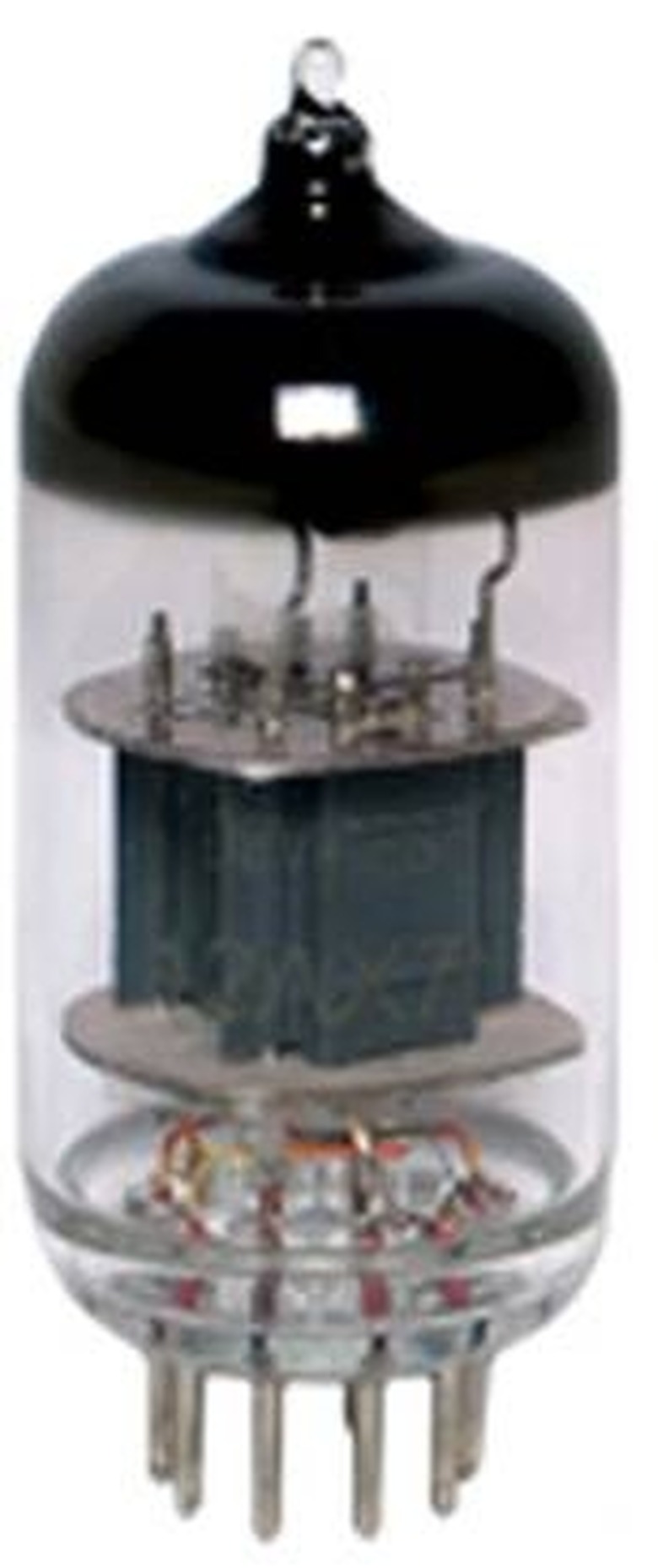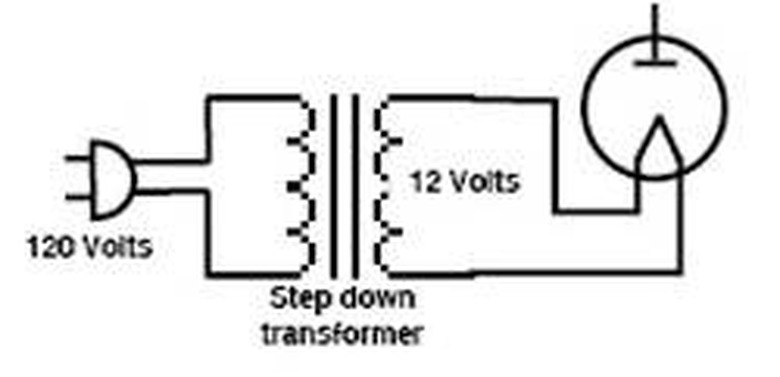How To Make A Vacuum Tube Light Up
Thomas Edison, who invented the light bulb, was experimenting with his carbon filament lamp in 1883 when he discovered that inserting a piece of metal into the top of the bulb when the filament was lit caused current to flow from the filament to the metal. Edison didn't know what to do with this discovery, but in 1904 Englishman Sir John Fleming applied this principal, and invented the first vacuum tube.
Step 1
Read the identifying tube type, which is printed on the glass tube itself. The designation will typically consist of numbers and letters. Most, but not all, tubes have their "heater" or filament lit up with either 6 or 12 volts AC (alternating current). There are exceptions, but the leading number in a tube's identification is often the required filament voltage. This is especially true if the number is 12 or less. For example, a 6L6 tube requires a filament voltage of 6 volts, and a 12AX7 requires 12 volts. Generally, voltages of 6 or 12 volts are the most common. To be sure of the required filament voltage for the particular tube you have, use a tube reference manual and refer to the tube's designation.
Step 2
Find filament pin numbers by using the data sheet in a tube reference manual for the tube you have. Tube manufacturers, such as RCA, publish books that show tube pin configurations. Tubes have various numbers of pins at their bottom to connect them to the outside world. Smaller tubes usually have a 7- or 9-pin base. Larger tubes commonly have octal bases, with a plastic "key" protruding from their base that fits into a slot in a tube socket. This ensures proper pin orientation to the base.
Step 3
Count the pins clockwise while holding while viewing the tube from the bottom. Begin with pin #1 and proceed clockwise through all the pins. Using the data sheet, determine which two pins are for the filament. For example, pins 2 and 7 connect to the filament in a 6L6, a popular power tube used in tube guitar amplifiers.
Step 4
Insert the tube in a tube socket designed for the style of that tube's base. This will make it easier to make connections for the filament.
Step 5
Solder the secondary leads of a step-down transformer to the two filament pins. The transformer output voltage must match the required filament voltage (6 volt, 12 volt). The primary winding of the transformer should plugged into a 120 volt AC outlet. Use caution when working with line level voltages. If the transformer does not have a line cord and plug on the primary, solder lamp cord to the primary and insulate with black electrical tape. AC plugs for the end of the line cord come in various installation configurations. The simplest one has an opening for the line cord to push through, and metal contacts pinch through the line cord's insulation to make contact. Your local hardware store can assist you with selecting and installing the plug. The tube filament is now ready to light up.
Things Needed
- Vacuum tube
- Tube reference manual with data sheets
- Tube socket that matches the tube's base
- Soldering gun or pencil
- Solder
- Step-down transformer
- Hook-up wire
- Black electrical tape
- Lamp cord
- 120 volt AC plug
Warning
Use caution when working with 120 volts AC. If you are not experienced or are not confident in hooking up the primary of a transformer, ask for help from a knowledgeable person.
Cite This Article
MLA
Keen, Dan. "How To Make A Vacuum Tube Light Up" sciencing.com, https://www.sciencing.com/make-vacuum-tube-light-up-4914157/. 24 April 2017.
APA
Keen, Dan. (2017, April 24). How To Make A Vacuum Tube Light Up. sciencing.com. Retrieved from https://www.sciencing.com/make-vacuum-tube-light-up-4914157/
Chicago
Keen, Dan. How To Make A Vacuum Tube Light Up last modified March 24, 2022. https://www.sciencing.com/make-vacuum-tube-light-up-4914157/




